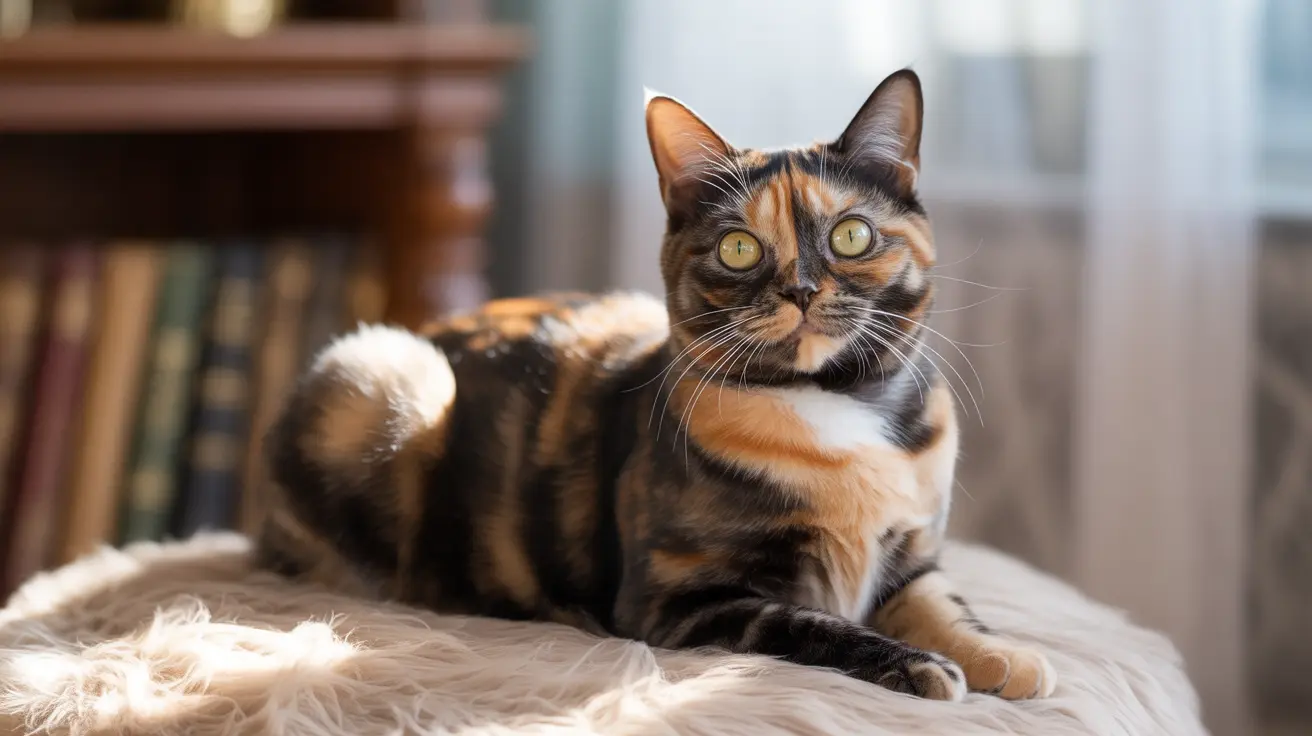Tortoiseshell cats, with their stunning multi-colored coats and distinctive personalities, require specific care to ensure they live happy, healthy lives. Whether you're a new tortie owner or looking to enhance your current care routine, understanding these unique felines' needs is essential for providing optimal care.
In this comprehensive guide, we'll explore everything you need to know about caring for a tortoiseshell cat, from their distinctive traits to daily care requirements and health considerations.
Understanding Your Tortoiseshell Cat's Unique Nature
Tortoiseshell cats are known for their distinctive bi-colored or tri-colored coats, typically featuring a mixture of black, red, orange, or cream patches. These cats aren't a specific breed but rather display a unique coat pattern that can appear in various cat breeds.
What makes torties particularly special is that they're almost exclusively female due to their genetic makeup, with male tortoiseshells being extremely rare (approximately 1 in 3,000). Many tortie owners report their cats exhibiting "tortitude" - a spirited, independent personality that makes them particularly engaging pets.
Essential Grooming Guidelines
Maintaining your tortoiseshell cat's coat is crucial for their overall health and comfort. Short-haired torties typically need weekly brushing, while long-haired varieties require more frequent attention, especially during shedding seasons.
Grooming Tools and Techniques
Select appropriate grooming tools based on your cat's coat length:
- Short-haired torties: Use a metal comb or rubber brush
- Long-haired torties: Invest in a slicker brush and mat splitter
- All coat types: Keep a fine-toothed comb for dealing with tangles
Health and Wellness Care
Regular veterinary check-ups are essential for maintaining your tortie's health. Schedule annual wellness exams and keep vaccinations current. Monitor your cat's weight, appetite, and behavior for any concerning changes.
Nutrition and Feeding
Provide high-quality, age-appropriate cat food rich in protein. Consider these feeding guidelines:
- Offer both wet and dry food options
- Ensure fresh water is always available
- Monitor portion sizes to prevent obesity
- Consider feeding puzzles for mental stimulation
Creating an Enriching Environment
Tortoiseshell cats thrive in environments that cater to their active and intelligent nature. Create multiple climbing opportunities, provide scratching posts, and ensure access to sunny window spots for observation and relaxation.
Mental Stimulation and Play
Engage your tortie in regular play sessions using:
- Interactive toys
- Puzzle feeders
- Climbing structures
- Hiding spots for exploration
Litter Box Management
Maintain a clean litter environment by:
- Scooping daily
- Completely changing litter weekly
- Providing multiple boxes in multi-cat households
- Choosing appropriate litter box locations
Frequently Asked Questions
How often should I groom my tortoiseshell cat based on its coat type?
Short-haired tortoiseshell cats need brushing once a week, while long-haired torties require brushing 2-3 times per week. During shedding seasons (spring and fall), increase grooming frequency for both coat types.
What is the best diet and hydration routine for keeping a tortoiseshell cat healthy?
Provide high-quality, protein-rich cat food appropriate for your cat's age and activity level. Ensure constant access to fresh water, and consider a pet fountain to encourage drinking. Mix wet and dry food for optimal nutrition and hydration.
How can I prevent and manage matting in a long-haired tortoiseshell cat?
Regular brushing is key - focus on prone areas like the belly, chest, and behind the ears. Use a detangling spray when needed, and address mats immediately with appropriate tools. Consider professional grooming for severe matting.
What are common behavioral traits of tortoiseshell cats and how should I interact with them?
Tortoiseshell cats often display strong personalities ("tortitude") and independence. Respect their space while providing consistent affection and interaction. Use positive reinforcement and establish regular play routines to build trust.
How do I maintain proper litter box hygiene and monitor health signs in my tortoiseshell cat?
Clean the litter box daily and perform complete changes weekly. Monitor your cat's bathroom habits, as changes can indicate health issues. Look for signs of normal urine clumps and stool consistency, and consult your vet if you notice concerning changes.
Conclusion
Caring for a tortoiseshell cat requires attention to their unique needs and personalities. With proper grooming, nutrition, environmental enrichment, and regular veterinary care, your tortie can live a long, healthy, and happy life. Remember to always observe your cat's individual preferences and adjust care routines accordingly.






